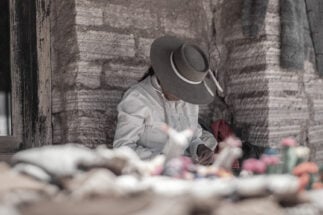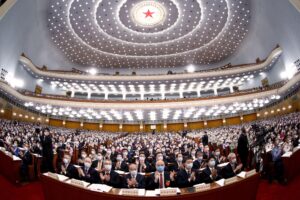32-year old Tshewang Gyem from Hatey village in Haa district of northern Bhutan recently switched from gas to an electric stove after finding out she could save hundreds of ngultrums (the local currency) each month.
Hers is one of the many rural households in Haa to have bought an electric stove. “I decided to switch as we are already provided with cheap and subsidised electricity,’’ said Sangay, another resident of Haa valley. “I can also use this stove during the times of crisis such as today.”
Bhutan has made substantial progress in household electrification in recent years, according to the Department of Renewable Energy. In 2018 over 99.97% of households had access to electricity, up from just 30% in 2003.

The large fossil fuel bill not only puts economic pressure on Bhutan, but also threatens its pledge to remain carbon negative under the 2015 Paris agreement, said one of the senior adminsitrators from the Druk Green Power Corporation, speaking on condition of anonymity. The corporation is in charge of Bhutan’s hydropower plants, which supply almost all of the country’s energy needs. Moreover the imports are also tied to a subsidy for liquified petroleum gas (LPG) from India. This was abruptly cut during the 2013 Bhutanese elections only to be resumed later, raising fears of external interference.
Greening cook stoves and household heating is now possible because of the availability of cheap electricity from hydropower, according to the Department of Renewable Energy. Most rural households are paying an electricity bill below BTN 150 [USD 2] per month.
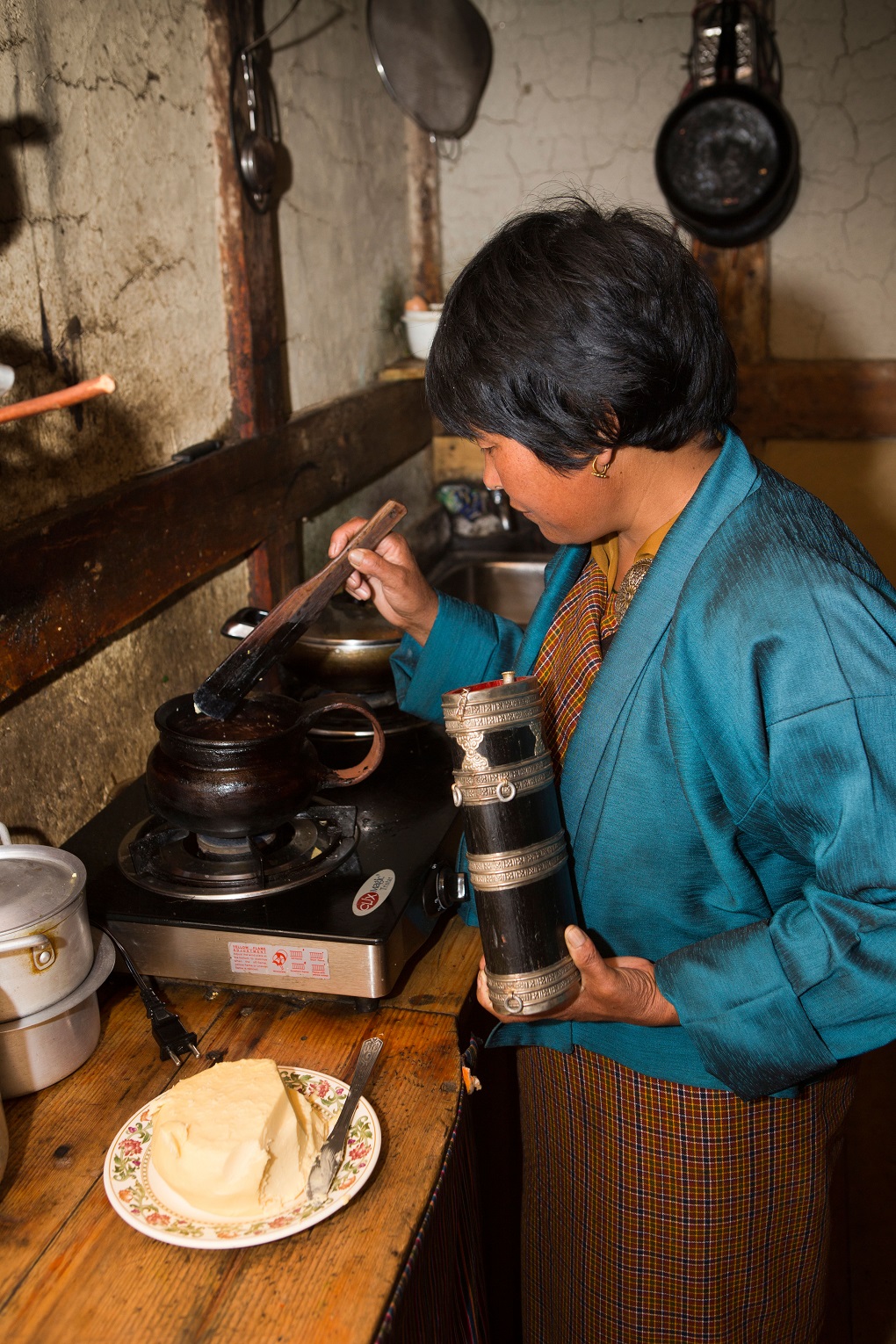
Clean export versus dirty import
The World Bank considers Bhutan’s development a success story, and its economic growth is credited to the development of hydropower for export.
However, the cost of importing dirty fossil fuels almost negates the revenue earned from the export of hydropower. Government statistics show that the country exported BTN 10.5 billion [USD 140 million] worth of hydropower but imported close to BTN 10.2 billion worth of fossil fuels in 2018.
Bhutan’s demand for fossil fuels continues to grow, driven by the rapid growth of vehicle use and other development activities. The Road Safety and Transport Authority of Bhutan recorded that there are 107,876 vehicles in the country, an increase from 90,000 vehicles in November 2017. This has led to deterioration in air quality, according to the National Environment Commission. In 2018 the commission found that the air quality between 6-9 a.m. and from 4-10 p.m. was poor. Two types of particulate matter, PM10 and PM 2.5, were found to be a common air pollutants in Bhutan.
Household cooking and heating add to the problem. A study by the Department of Renewable Energy found that the import of LPG, used for cooking and heating, has increased at an alarming rate from 6,719 metric tonnes (MT) in 2013 to 8,079 MT in 2017. Emissions from current levels of LPG produce an estimated at 24,000 metric tonnes of carbon dioxide equivalent per year. That is equivalent to almost a quarter of Bhutan’s total carbon emissions in 2014.
LPG imports are predicted to continue to rise further. As per the draft report on cook stoves by the Department of Renewable Energy, the cost of importing LPG cylinders was an estimated BTN 981 million [USD 13 million] per year.
Reducing fossil fuel
Bhutan’s leaders have been struggling to reduce use of fossil fuels. Encouraging alternative sources of energy has been one way out.
Reducing dependence on the import of fossil fuels was also at the centre of election pledges of the current ruling party Druk Nyamrup Tshogpa in 2018. The party promised to encourage the use of alternative energy sources and reduce local fossil fuel consumption.
Minister for Economic Affairs Loknath Sharma said the import of fossil fuels did not completely negate the export of clean energy, especially since the commissioning of Mangdechhu hydropower project in 2019. He said, “However our concern is that if we continue in the same mode, whatever hydropower we export, we might be consuming equal amounts of fossil fuels.”
His government is also exploring wind, solar, increasing electrification and expansion of biogas plants, he said.
Electric cars key
Electrifying the country’s growing vehicle fleet will be an even bigger challenge.
Bhutan had around 118 electric vehicles as of February 2020, and the Ministry of Information and Communication, as part of a GEF/UNDP project, plans to roll out 300 electric taxis as part of the subsidy scheme for 2019-2021, said Dawa Zangmo, chief engineer with the Research and Development Division under the Department of Renewable Energy.
The government has ambitious plans to transition to electric transport, Sharma said, but only 15-20 years down the line as the technology improves.
See: Road to electric vehicles in Bhutan is paved with hurdles
To encourage electric vehicles, the Government is providing tax cuts and exemptions or low interest loans for them. There are also plans to establish quick charging stations along the highways, according to the Economic Affairs Minister.
“We are already transitioning to electric mode slowly. For example, the government has already procured a few hybrid cars used by the ministers in the place of luxury Toyota Prado that consume a lot of fuel,’’ said Sharma.
Cook stoves – a green business opportunity
But there are some more immediate opportunities to reduce fossil fuel use in household cooking.
A study by the Department of Renewable Energy found that electric stoves or induction cookers are faster and cheaper and consume less energy compared to LPG stoves.
Tshering Penjor, a Thimphu based businessman, sells imported electric stoves, or induction cookers. He started in 2018 and has already sold around 11,000 electric stoves.
He is one of the few business people selling electric stoves in the country. He has branded his product “Yoe Gi Thab’’ (the brand we trust).
Penjor said that initially he faced immense challenges because people assumed that the stoves consumed more energy and also due to the free availability of LPG. Despite several advertising campaigns and various marketing strategies, it took him quite some time to convince people about the quality and low energy consumption of his product.
It was only by going village-to-village and district-to-district to demonstrate his product that sales started to increase.
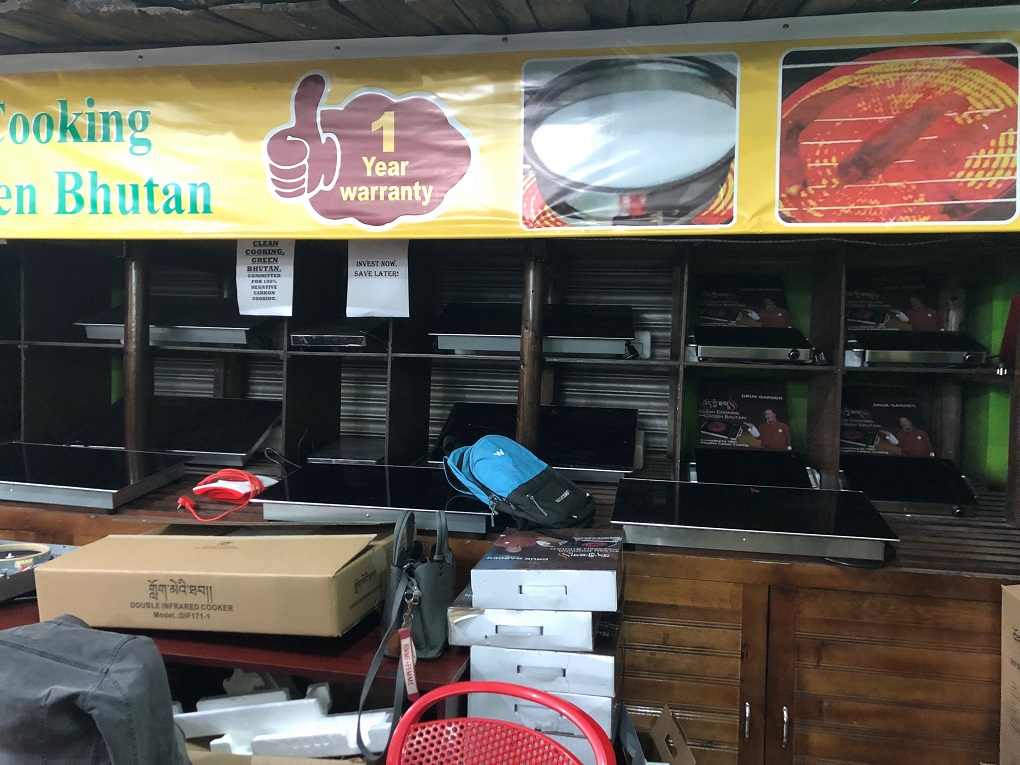
“Our target is to reach out to 300,000 households in Bhutan,’’ he said. “I started this business after learning about the changes it could bring in terms of the environment and trade.”
Way forward
Dawa Zangmo said there are already 5,003 biogas plants in villages across the country, installed in collaboration with the Department of Livestock.
Sharma said the government is also trying to roll out biogas for cooking on a commercial scale. “We have sent people to Nepal to see similar commercial biogas [projects] we can copy and which are successful. If we have at least one such biogas plant for commercial purposes, this can help provide [us] with clean and renewable energy, and can also replace LPG gas. We also have plans to install one solar plant.’’
![<p>Bhutanese families, like this one photographed in 2015, have moved from wood based cooking stoves to LPG ones, and are now transitioning to electric stoves [image: Alamy] </p>](https://dialogue.earth/content/uploads/2020/05/electric-stoves-bhutan-1-300x200.jpg)

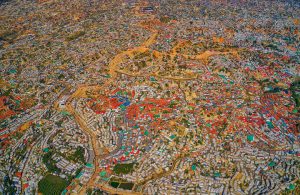
![A man is seen looking up at the sky from his doorway before the hit of the Cyclone Amphan.Super Cyclone Amphan hits West Bengal with a speed of 130 kmph on the afternoon of 20th May [image: Alamy]](https://dialogue.earth/content/uploads/2020/05/Cyclone-Amphan-300x214.jpg)


